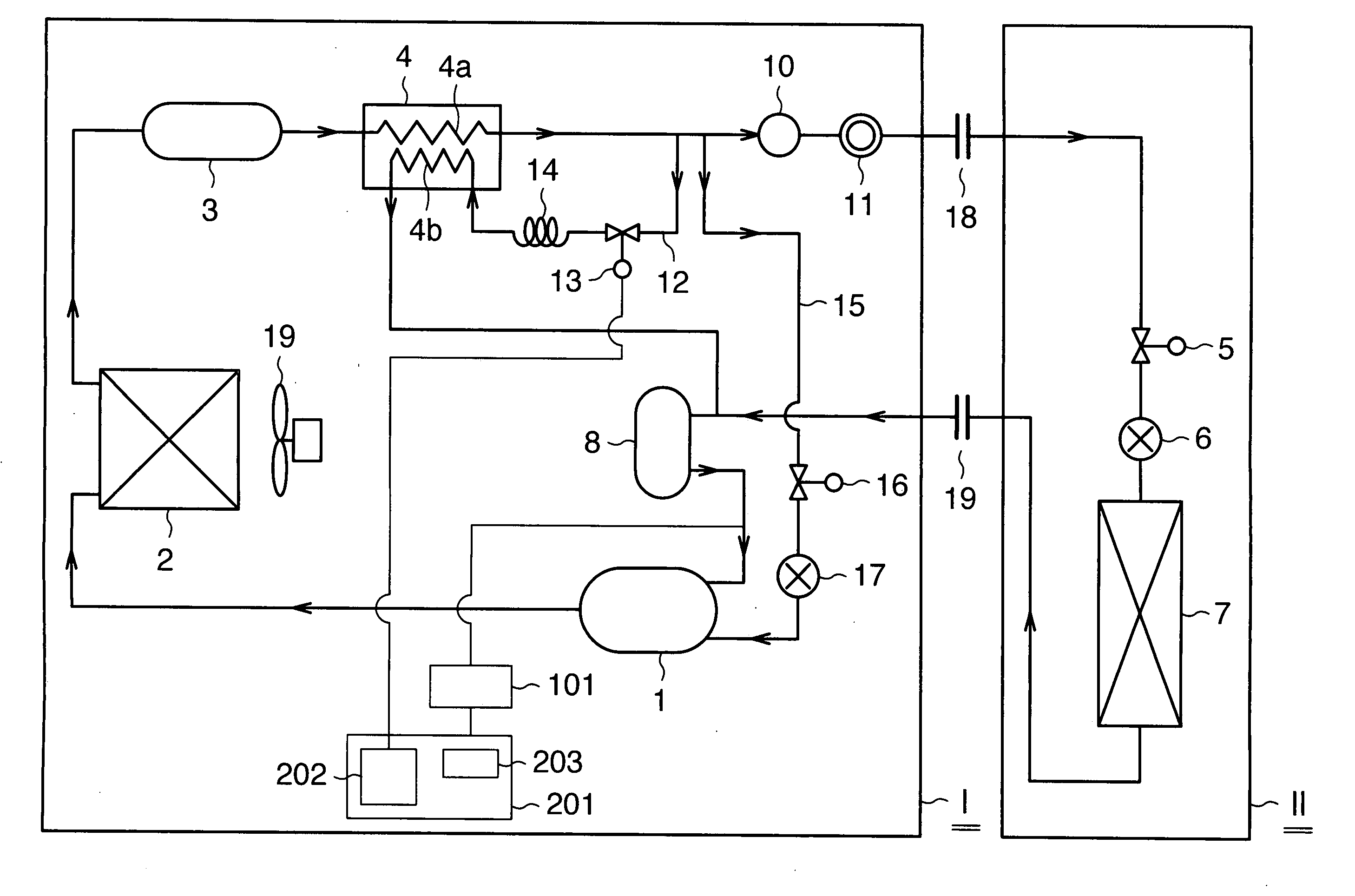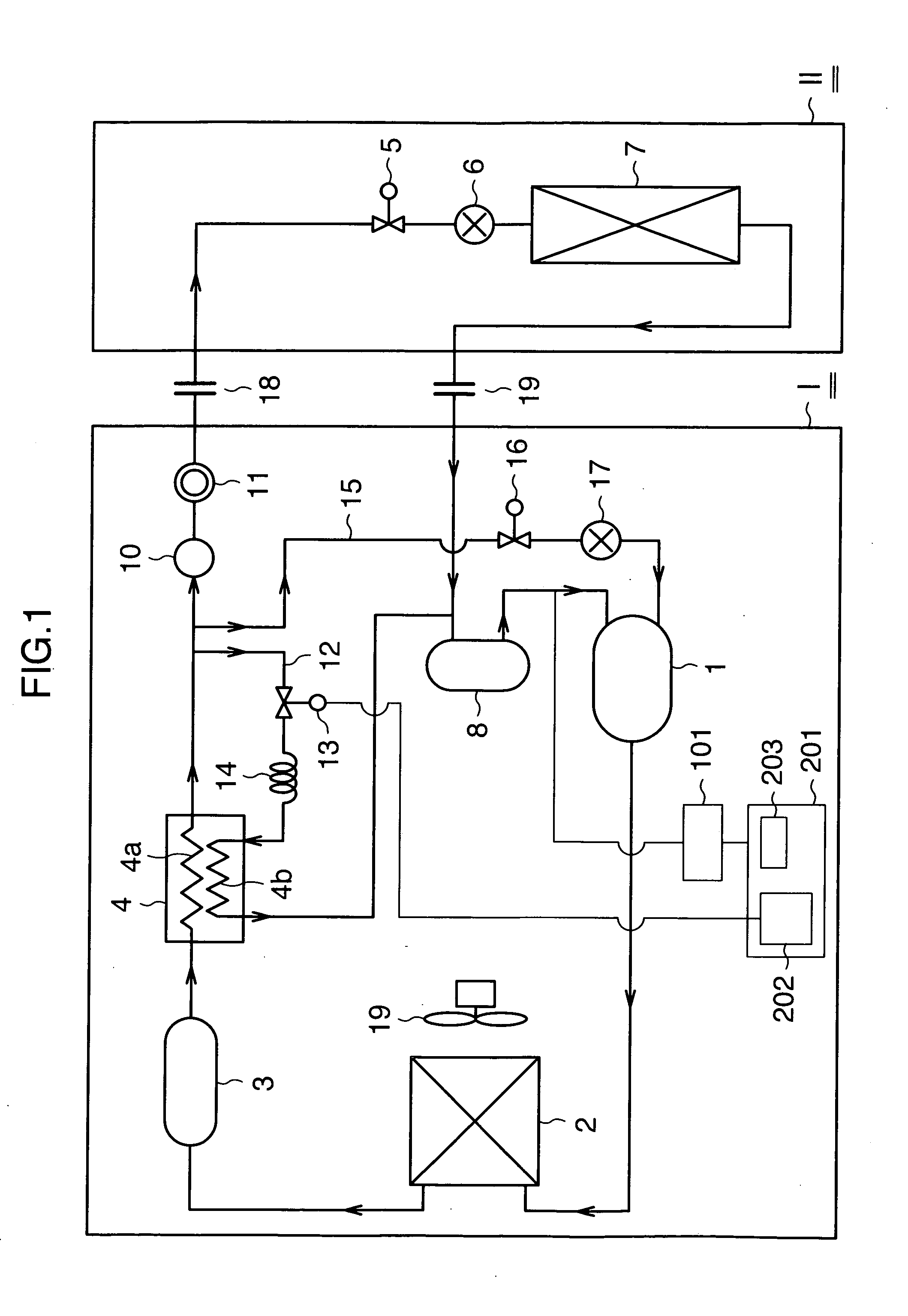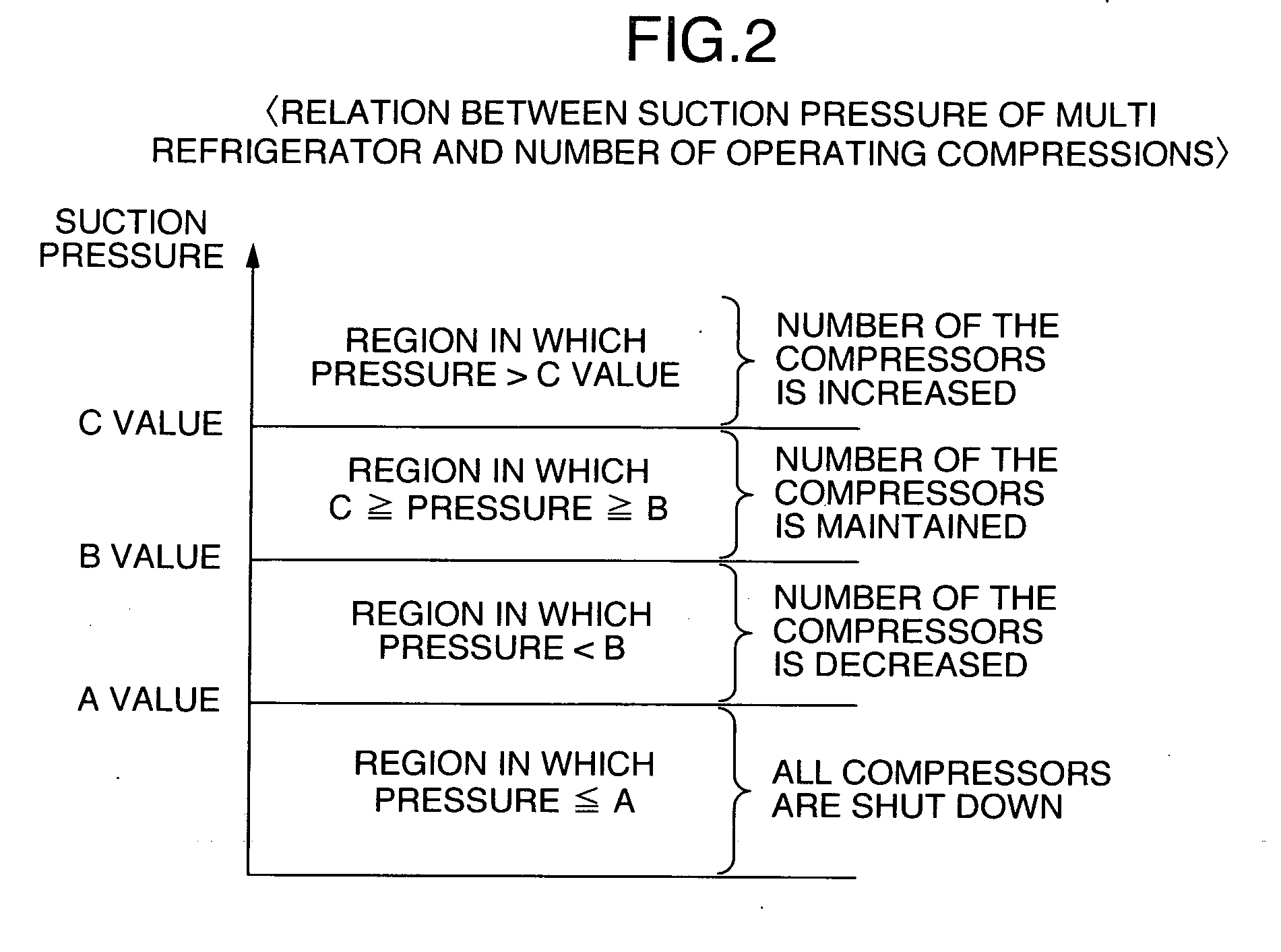Refrigerating apparatus
a technology of refrigerating apparatus and refrigeration chamber, which is applied in the direction of refrigeration safety arrangement, refrigeration components, lighting and heating apparatus, etc., can solve the problems of prone to flushing phenomenon, high pressure loss, and risk of liquid refrigerant re-evaporation, and achieve stable operating state and high operating efficiency
- Summary
- Abstract
- Description
- Claims
- Application Information
AI Technical Summary
Benefits of technology
Problems solved by technology
Method used
Image
Examples
Embodiment Construction
[0024] Hereunder, embodiments of the refrigerating apparatus of this invention are described using the attached drawings. FIG. 1 is a block diagram that shows the refrigeration cycle of a refrigerating apparatus applying this invention.
[0025] In this figure, the refrigerating apparatus of the present embodiment comprises a refrigeration cycle and a control apparatus. The refrigeration cycle has an air-cooled integrated type refrigerating apparatus I and a low-pressure side device II connected to the apparatus I.
[0026] The air-cooled integrated type refrigerating apparatus I comprises an accumulator 8, a compressor 1, a condenser 2, a liquid receiver 3, a supercooling heat exchanger 4, a dryer 10, and a sight glass 11 that are connected in this order by refrigerant piping, and a cooling fan 9 is disposed in the vicinity of the condenser 2. The low-pressure side device II comprises a solenoid valve 5, an expansion valve 6 and an evaporator 7 that are connected in this order by refri...
PUM
 Login to View More
Login to View More Abstract
Description
Claims
Application Information
 Login to View More
Login to View More - R&D
- Intellectual Property
- Life Sciences
- Materials
- Tech Scout
- Unparalleled Data Quality
- Higher Quality Content
- 60% Fewer Hallucinations
Browse by: Latest US Patents, China's latest patents, Technical Efficacy Thesaurus, Application Domain, Technology Topic, Popular Technical Reports.
© 2025 PatSnap. All rights reserved.Legal|Privacy policy|Modern Slavery Act Transparency Statement|Sitemap|About US| Contact US: help@patsnap.com



